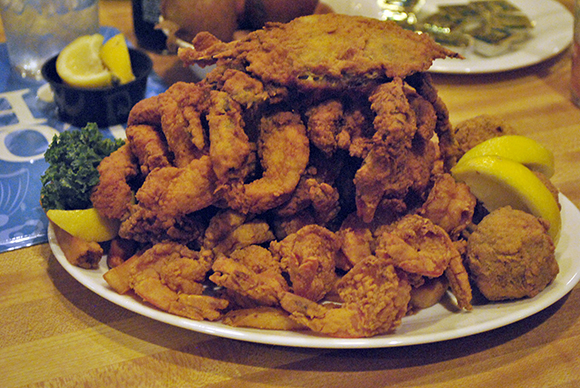
{This is a three part series. Read “How New Orleans Marches On, Part I” here.}
It’s been several years since Hurricane Katrina and an oil spill wrecked havoc in the gulf. Most recently, there was flooding from the Mississippi river, spilling fresh water into many saltwater oyster beds. The oysters in the gulf–American or Eastern varieties–are one of the few places in the world demanding a precarious mix of fresh and saltwater. Other oyster varieties in the world, including regions in the United States, only live in salt waters. With numerous disastrous hitting the the gulf states, one might think the seafood industry is in decline. It isn’t, and it’s determined to return to their worldwide number one status.
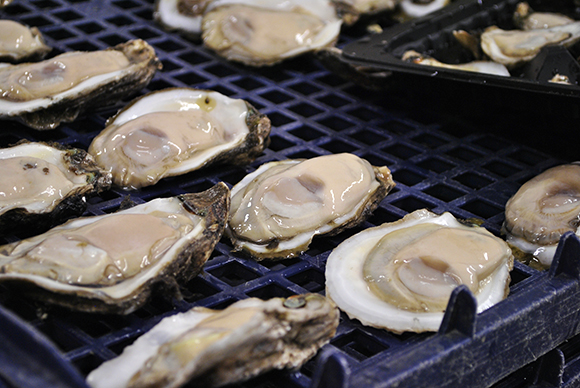
Even before the oil spills and hurricanes, the Gulf seafood was one of the world and country’s most regulated industries. As man-made disasters and Mother Nature wreck havoc in the gulf, the industry quietly took the opportunity to learn from their mistakes. They may or not know it now, but they could be writing the rules on how to recover, in which other industries could follow should they be faced with a natural disaster threatening their marine ecosystem. And, within the last few years, many global warnings about Mother Nature showing her wrath have become eerily true as floodings, tornados and superstorms have become more frequent.
On our second day in New Orleans, we boarded a bus to visit a small town directly located on the gulf: Houma, LA. Our group toured Motivatit Seafood, an oyster processing plant and we rode in speed boats on Lake Mechant to see how oysters are cultivated. Harvesting oysters is done by fishermen whose families have harvest oysters for generations. Our group was given a tour on a speedboat by a fisherman who showed us oyster boats in action on Lake Mechant, in which Motivatit Seafood leases areas on the lake from Louisiana every five to seven years. Once the speed boat took off at high speed, we saw boathouses, fishermen, and an occasional fish flying through the air. Narrow tall white poles intermittently were seen throughout the lake, marking Motivatit Seafood’s leased land, and it also indicates the first place of harvest for a newly established Oyster Traceability Program launched in 2011. Using QR Code technology, consumers, restaurant owners, chefs and seafood markets can trace gulf seafood with precise details such as the exact location where an oyster was harvested in a lake, to the fisherman’s name and boat, how it was stored on the boat, who is the processing plant, how long it took on a plane to reach a restaurant. The traceability program could be the start (if it hasn’t been already started) for produce, livestock and other natural food industries desiring a transparency program under consumer and wholesale demands.
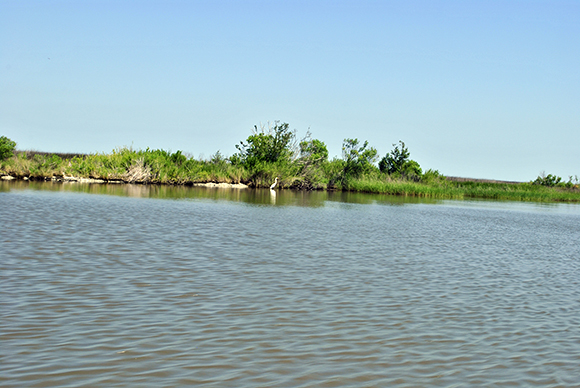
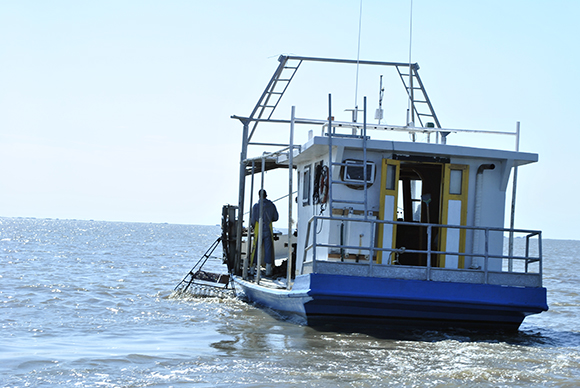
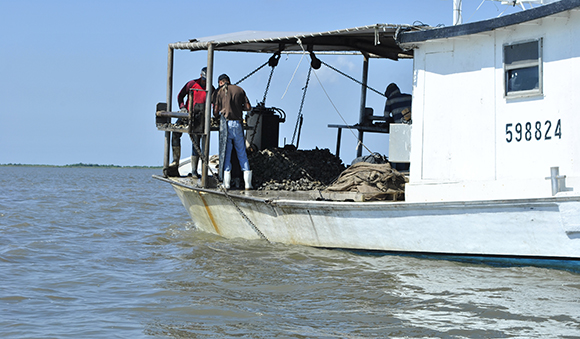
When oysters are dredged from the water (back breaking work), fishermen sort through the oysters for the adults averaging at least three-inches wide. It takes oysters three to four years to reach maturity also indicated by a hard shell. The young, weak, empty shells and other marine life are returned to the lake. Maintaining the ecosystem for oysters to continue to reproduce not only financially benefits seafood companies, but it’s important for marine wildlife. One oyster filters 50 gallons of water in 24 hours. Once a oyster meat is extracted from its shell, seafood processing plants return the shell to the waters to replenish oyster beds. The hard calcium-carbonaceous shells is not only the foundation used solely for oyster larvae to grow, but various types of marine life, such as mussels, use it for their reproduction cycles and habitation use, too.
After the chosen oysters are sorted, about 300 oysters are packed in sacks with each between 100 to 120 lbs. Keep in mind, only the meat of the oyster is wanted, and its only five-percent of the whole shell. If you’re good at math (unlike me), one quickly realizes fishermen do a lot of back-breaking work for our dining pleasure. Once the oysters are packed, they’re taken to a processing plant, such as Motivatit Seafood. The oysters are high-pressured processed (HPP) to rid even a trace percentage of the deadly Vibrio bacteria and it loosens the muscle to make shucking easy. The process also maintains the oysters’ liquid. Afterwards, oysters are sorted to be sold without their shells, wrapped with just Motivatit’s signature gold band or fully wrapped to extend shelf life while maintaining a ‘caught the same morning freshness’ taste.
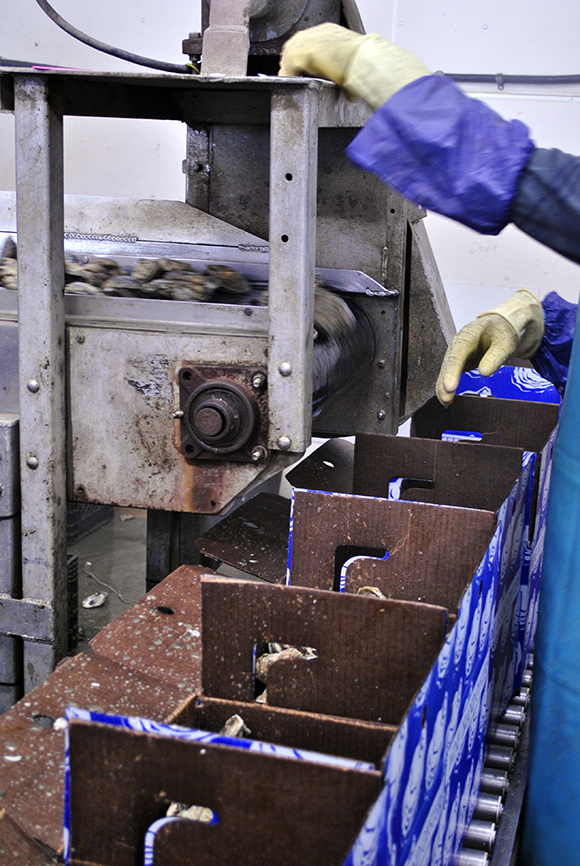
After speedboating though Louisiana’s Lake Mechant, our next destination was Jensen Tuna, a tuna fish and shrimp processing center directly dealing with retail stores, such as Wholefoods. At the time of our visit, the shrimp processing facility was being cleaned and set up, because the season opened the following week. Upon our arrival, three yellowfin tuna carcasses were on displayed for us to see (bluefin tuna’s season runs from about December to June. During off-season, it isn’t targeted). As soon as tuna is caught, its graded by quality. Grade 1 is sold as sushi or raw. Grade 2 or, “white table,” is sold as cooked. Lastly, grade 3 is sold in prepared foods, such as smoked fish dips. The fishermen are paid three different price points for each grade to encourage them to find the best quality fish.
Although Jensen’s shrimp processing machines were in the process of getting ready for the start of the season, we were able to see machines that removes heads and peels the shrimp, grades shrimp by size (the grade is determined by the number of shrimp per pound). Jensen produces three million pounds of shrimp per year, and they’re a smaller producer than the larger producers who process 20 million pounds a year.
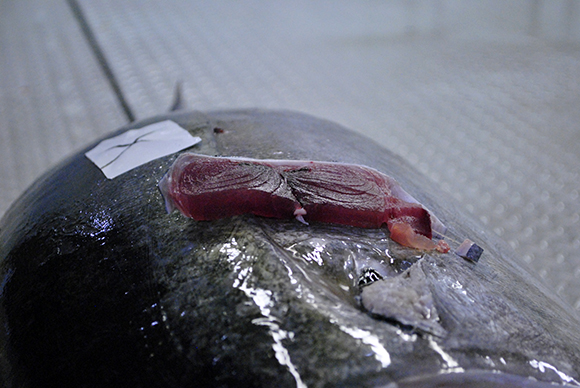
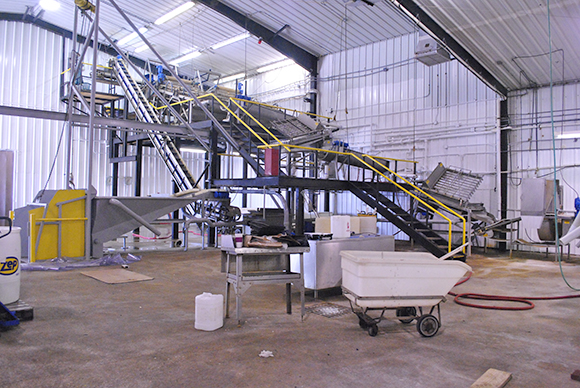
After a morning of visiting seafood processing plants and an exciting speedboat ride, we were starving. Our bus pulled up into Deanie’s Seafood’s park lot. We were greeted by an appetizer of ‘all you can eat’ boiled crawfish, potatoes, sweet corn on the cob and boiled shrimp. Then we were seated to order our lunch. After taking our orders, the wait staff brought out andouille sausage. The taste brought back memories of when Dad briefly dabbled in sausage making (the absolute best taste). My order of Crabcake and sweet potatoes fries was buttery. Someone had ordered a Deanie’s Po-Boy sandwich, a giant plate of fried seafood that ended up being shared, because there was a tasting dinner later in the evening along with a roundtable discussion about the Gulf States Seafood industry.
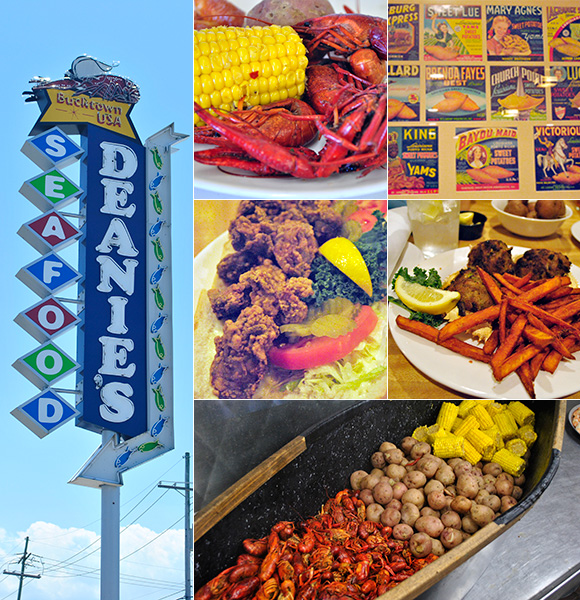
Information overloaded about oysters, tuna, shrimp and stuffed with all the seafood anyone can handle in one lifetime, our bus finally returned to the French quarter. Running behind on schedule, we rushed back to our rooms (some took a detour to tour the French Quarter) to prep for the evening. Stay tuned for the conclusion of “How New Orleans Marches On,” three-part series.
Comments are closed.